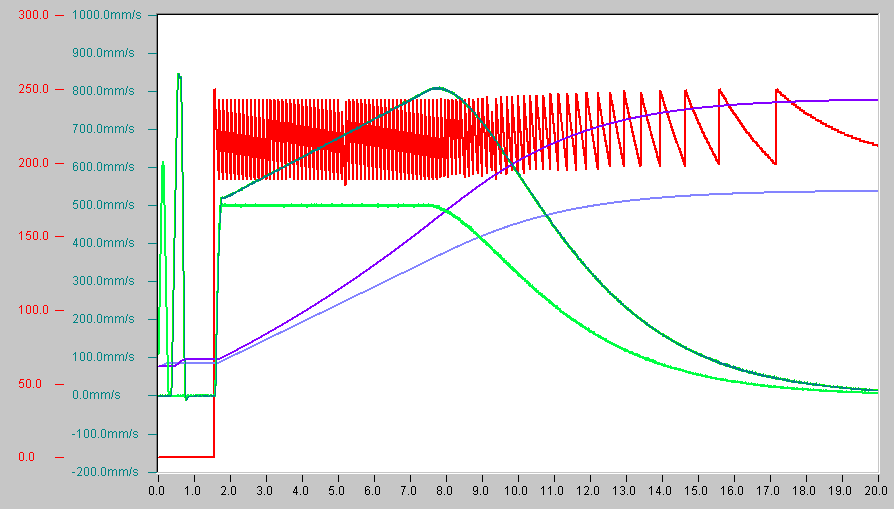Sequence and the Generation of Set Values
- Preparation phase: Group FIFO and parameterize.
- Fill FIFO and run FIFO group.
- Prepare FIFO data and refill FIFO.
- Stop and reconfigure group.
The generation of set values includes the set position, set speed, set acceleration and the set direction.
Preparation phase
- All the axes are moved to a base position in PTP mode (which must be compatible with the first line in the FIFO).
- Create the FIFO Channel: interpreter channel without interpreter.
- Create the FIFO group: the axes are collected into the FIFO group.
- Parameterize the FIFO group.
Start Phase
- The FIFO is filled with data as far as possible.
- Set the FIFO override.
- Run the FIFO group.
Running Phase
- Data for the FIFO is provided in the PLC by the user or is generated, and is collected in a buffer internal to the PLC.
- PLC cycles transfer this data to the FIFO in the NC. If the FIFO is too full to accept the whole of the buffer's contents, the whole buffer is refused, and the PLC must offer it again. To assist optimization of the timing it is possible for the number of filled lines in the FIFO to be interrogated.
- The NC works through the FIFO entries in SAF cycles. If the FIFO is empty the axes retain the set position values of the last FIFO line (which causes a following error if the axes were not at that stage stationary).
- For all the axes, the FIFO generator must provide: the set position, set speed, set acceleration and set direction.
End Phase
- The positioning process normally ends by the contents of the FIFO bringing the axes to a halt followed by a stationary interval.
- The axes can be stopped by a FIFO override of 0.0.
- The FIFO can run dry, bringing the axes to an instantaneous halt.
- After being stopped, the axes in the FIFO group can be reconfigured as PTP axes.
Set value generation
When working in sequence through the FIFO entries, the set value generation process determines not only the set position, but also the set speed and the set acceleration for an axis. The set speed is generally used as a speed pre-control, as in TwinCAT PTP.
With every SAF call, the FIFO generator seeks the nearest pair of lines according to the elapsed time (taking the override into account), performs a linear interpolation of the position, and calculates the speed and acceleration from the differences. There are known faults in this method of calculating the set values from differences: the magnitudes should not therefore be used as input values without some examination.

Process flow with two FIFO axes (positions and speeds, set and actual values) and the quantity of data in the FIFO (red).